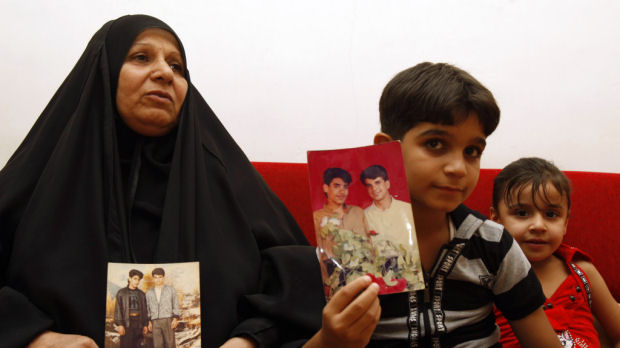Baha Mousa inquiry damning on many levels
Channel 4 News’s Jonathan Rugman finds the report into Baha Mousa’s death critical of the soldiers who abused him, of the British Army, the MoD, and even the regimental padre.

This report finds fault not just with the soldiers involved in abusing detainees, writes Channel 4 News Foreign Affairs Correspondent Jonathan Rugman.
Their commanding officers who either should have known or did know what was going on; the regimental doctor who examined the dead Baha Mousa and didn’t formally report what he knew; the “corporate failure” at the Ministry of Defence which “did not have a grasp on its own interrogation policy”.
All these are in the retired judge’s firing line, as is the Catholic padre in the regiment who “did not find the courage” to intervene.
Just in the executive summary, I counted the names of eight soldiers invloved in the abuse. And yet the court martial – at £20m the most expensive in military history – found only one man, Corporal Payne, guilty. So the inquiry makes a mockery of previous attempts at justice.
This is not the end of the story. More court martials for those still serving, and civil prosecutions for now retired soldiers, seem bound to follow. An additional 150 Iraqis are claiming through the courts that they were also abused, so an even bigger public inquiry than this one, which cost £13m, may also be required.
What happened to Baha Mousa and his fellow nine detainees cannot now be explained away as the actions of a few rogue soldiers. MoD statements have, says the judge, been “misleading”, with “unsatisfactory assurances” and “overly defensive lines”.
Turn to page 1248, and you find that some of the techniques used in Iraq in 2003 were still being used up to September last year. And that’s on top of the clear evidence that techniques first banned by the Heath government in 1972 were still in use in Iraq over 30 years later.
-
Latest news
-
Ex-Trump lawyer Michael Cohen testifies at hush money trial3m

-
Racial hate speech laws being ‘weaponised’ warns National Black Police Association7m

-
‘Hard to believe so many women going through such horrors’, says woman whose baby daughter was stillborn8m

-
Damning report condemns ‘shockingly poor’ UK maternity services12m

-
People ‘expecting the West to stand by Georgia’, says opposition party leader5m

-




